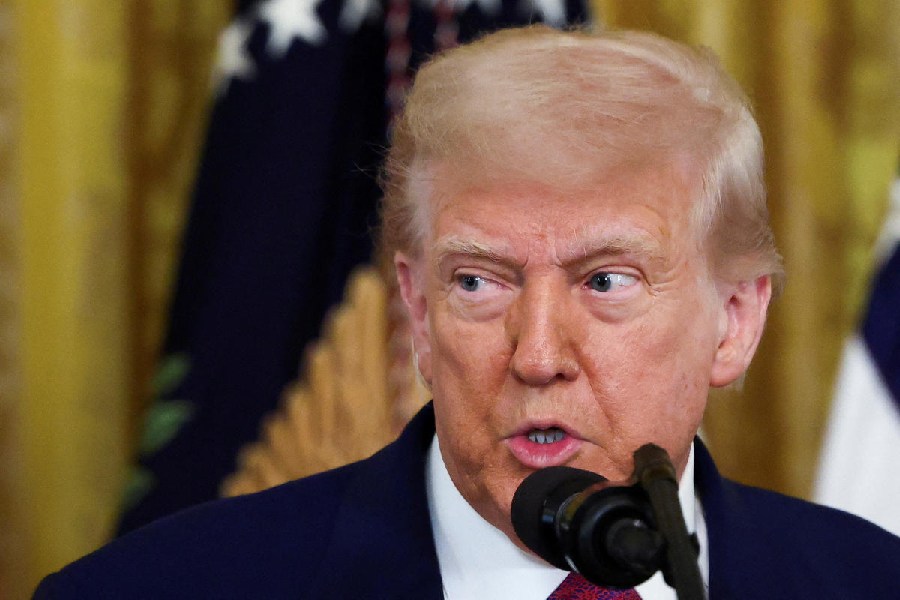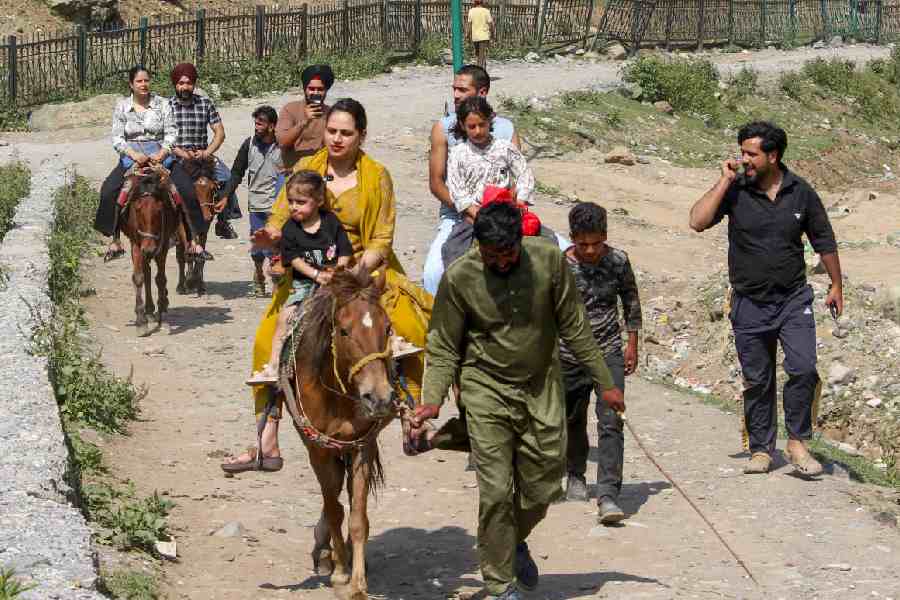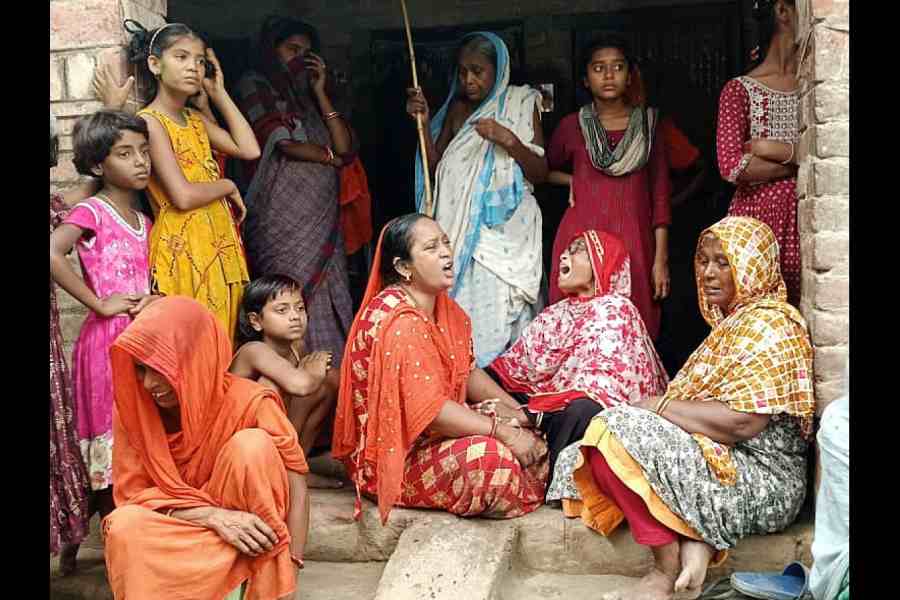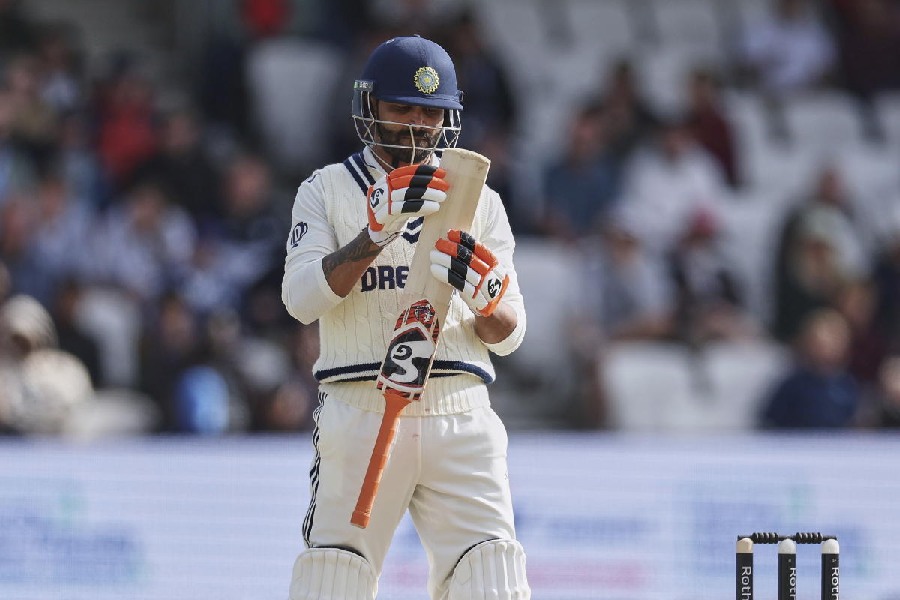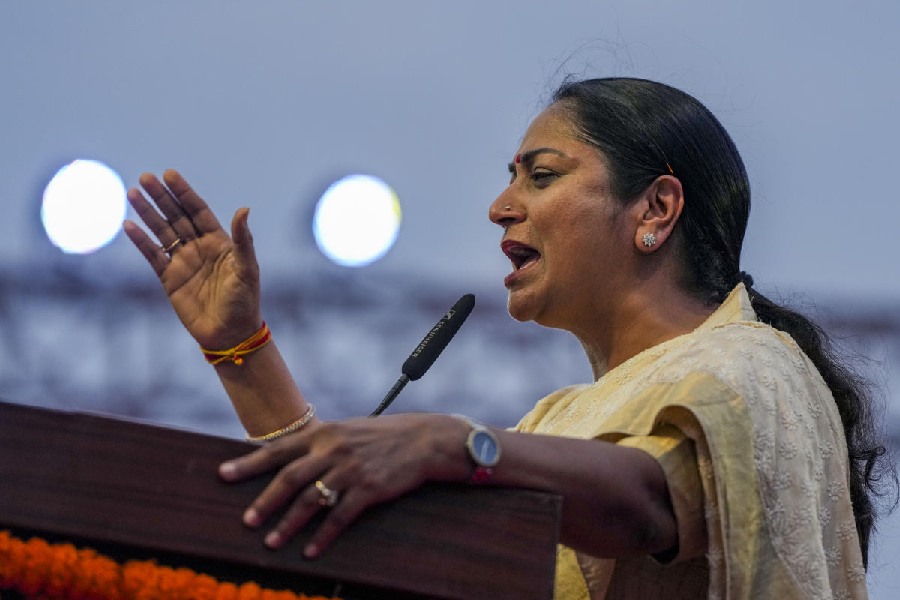In the early Seventies, Partha Chatterjee wrote an essay, now forgotten, which began with a quotation from Tennyson's In Memoriam: 'Our little systems have their day;/ They have their day and cease to be.' The lines come back because Chatterjee's new book (A Princely Impostor?: The Strange and Universal History of the Kumar of Bhawal, Princeton, $19.95) is a sure sign that modes of historical analysis which privileged non-narrative forms of history writing over narrative history have had their day. Practitioners of narrative history no longer need to be frightened of being derided for being old-fashioned. Chatterjee's new book is narrative history tout court. It is also narrative history at its best: lucidly written, and based on solid and voluminous evidence which is incisively and relentlessly analysed. The analysis is very deftly woven into the storytelling and the authorial voice is low-key and invariably meaningful in its rare interventions.
The success of the narrative grows from the subject matter, one of the sensational legal cases of Bengal, and from Chatterjee's manner of re-telling it. The Bhawal case captured the public attention and imagination through the Thirties and the early Forties as it had moved from the district judge's court in Dacca to the High Court in Calcutta to the Privy Council in London. Before that, in the Twenties, Dacca had been rocked by the strange sannyasi who had appeared on Buckland Bund and had later declared himself to be the second kumar of Bhawal, one of the biggest zamindari estates in East Bengal.
The basic facts of the case Chatterjee discloses in the first chapter. On May 8, 1909, the second kumar of Bhawal, Ramendra Narayan Roy, was reported to be dead in Darjeeling. He was cremated there and his wife and the entourage that had travelled with him returned to the ancestral home in Jaidebpur. There were rumours around that the kumar's body had not been properly cremated and that he was alive, living as a sannyasi. Sometime in December 1920 or January 1921, a sadhu appeared on Buckland Bund. For four months, he just sat there come rain, come sunshine. After that, events moved fast. People began to notice a similarity between the sadhu and the second kumar. He was sent to Jaidebpur. There, Ramendra's second sister, Jyotirmayi, noted that the sannyasi did have strong resemblances to her dead brother. On being shown a picture of Ramendra, the sadhu wept. This was followed by a declaration by the sadhu that he was, in fact, Ramendra. He passed most of the tests of memory and most people who had known the kumar noted the almost unbelievable physical similarities. A public meeting was held in the palace grounds and a huge crowd hailed the return of the kumar. In the public mind, there were no doubts about the identification. But the district administration declared the sannyasi to be an impostor and asked the tenants not to pay their rents to him. The wife of the kumar in Calcutta and her brother, her principal advisor, refused to accept the identification. In their minds, Ramendra was dead and had been cremated, a dead man could not come back. But the return of the Bhawal raja had become a household word in the whole of Bengal.
It was inevitable, given that property and money were involved, that the matter would go to court. In 1930, a suit was filed in which the plaintiff, Ramendra Narayan Roy, asked the court to declare that he was Kumar Ramendra Narayan Roy and was entitled to a one-third share in the properties of the Bhawal raj. The hearing opened in 1933 in the court of Pannalal Basu, subordinate judge of Dacca district. If the kumar-sannyasi is the protagonist of this narrative, its real hero is Judge Basu. In a remarkable judgment which stood up to the scrutiny of the High Court and the Privy Council, Basu upheld the claims of the plaintiff. Nobody reading Chatterjee's book can fail to be impressed by the quiet dignity and integrity of this man.
Chatterjee re-tells the case as it unwound itself in Basu's court and then in the High Court and the Privy Council. This recounting is detailed and Chatterjee draws upon the legal records, newspaper reports and the popular pamphlets and verses that had appeared as the case progressed. This, in a sense, is the meat of the book. If this were all, then Chatterjee's book would be no different from the run-of-the mill narrative that passes as history. Chatterjee introduces unobtrusively a number of other elements which take the book from story to history, from narrative to historical narrative.
One of these is obviously context. The appearance of the sannyasi, the subsequent legal case and its ultimate disposition in the Privy Council all took place in an extremely significant period, turmoil-ridden like any period of transition. The sannyasi's appearance and his declaration that he was the second kumar coincided with the Non-cooperation and the Khilafat movement. The ambience of that movement enabled Hindu and Muslim tenants to act together to support the sannyasi's claims. This may have forced the district administration to see the sannyasi as a potential troublemaker. The Thirties, when the case was actually heard in the two courts in India, was the high noon of Indian nationalism. There was already in place a group of professionals, especially lawyers and judges, who were prepared to provide the leadership to a sovereign and modern nation state. Basu, C.C. Biswas (the only Indian in the High Court bench that heard the appeal) and B.C. Chatterjee (who appeared for the plaintiff) were all informed by this new consciousness. Chatterjee discerns in the interstices of the Bhawal sannyasi case a 'secret history of Indian nationalism'. There was a general perception, Chatterjee says, that the Bhawal sannyasi case was a fight between the colonial government and the people. The leadership in this fight was provided by functionaries within the system who, as Chatterjee points out, were telling their colonial masters, 'We now know the universal principles of law...we understand the cultural peculiarities of this country much better. Leave it to us to run the system.' The British side of this was the recognition of decolonization, and it was evident in the judgment of L.W.J. Costello written during the war in England where he was on furlough. His verdict turned the case in favour of the plaintiff in the High Court.The production of judicial truth was determined by the historical conditions in which the judges found themselves.
Chatterjee draws special attention to the women involved in the case. They were behind the scenes, given their status as orthodox Hindu women, but they 'propelled the course of events'. Jyotirmayi interrogated the sadhu before she accepted him as her brother. Having done this, she became his chief supporter in court and in the family. She withstood cross-examination and allowed the High Court to inspect her physical features to see if they resembled those of the plaintiff. The first rani, Sarajubala, supported the plaintiff financially and otherwise and faced slander. The third rani whose adopted son was the heir to the Bhawal estate opposed the plaintiff and lied in court to establish her claims. Finally, there was Bibhabati, the second rani. She consistently refused to accept the sannyasi as her husband. She retained her dignity and remained unfazed under hostile questioning in court. She withstood public vilification and took her case to the Privy Council. After she lost her case and following the death of the second kumar, she refused to accept Rs 800,000 from the Court of Wards as settlement of the estate of Kumar Ramendra Narayan. She said, 'If I take the money, will I not be accepting what I know to be false?' The day the Privy Council judgment reached Calcutta by telegram, the kumar had a stroke on the steps of the Thanthania Kali temple where he had gone to offer puja. He died two days later. Bibhabati believed that she had lost the legal battle but had won in the highest court. An impostor had not been allowed to enjoy the property; the deity had not allowed him to offer puja in the name of a dead man.
At the heart of the matter was the question of identity and truth. Both extraordinarily elusive, in court, in history and in life. The curtain came down on the Bhawal drama more than five decades ago, and the evidence collected was enormous. But even now, as Minerva's owl spreads its wings, the historian cannot be sure, as Chatterjee confesses, about the truth of the matter. Was the sannyasi really the second kumar? One cannot be certain. This perhaps is the aporia inherent in the craft and practice of the historian. No amount of evidence and distance in time allows him an access to Truth.
The Bhawal sannyasi case is a poignant reminder of this because it revolved around the question of identity. Chatterjee in the only non-narrative exegesis in the book analyses the philosophical, Western and Indian, understanding of identity. Modern regimes of power have an obsession with identity and this leads Chatterjee to state a general truth: 'modern governmental regimes must presume every individual to be an impostor until he or she is able to prove the contrary'. The apparent provocativeness of this is lost when set beside the experience of anyone who has been questioned by immigration officials in an international airport. Identity cannot be taken for granted: the onus of proof is always on the person, the interrogator is forever sceptical. Foucault has shown that the disciplinary systems of modern governments produced the individual as an entity but those same systems in the 20th century require that an individual for the exercise of his freedom demonstrate legitimate proofs of his identity. 'Now that the People have taken the place of the Prince,' Chatterjee comments, 'everyone is an impostor until the Prince-that-stands-for-the-People is satisfied to the contrary.'
This is where the Bhawal sannyasi case, caught in a transition from a dependent colonial to a sovereign postcolonial state, acquires a universal dimension. But the case perhaps touches even profounder depths of universality. What constitutes the identity of a human being? Do we know our own identity? Do we have a fixed and one identity?
Can identity ever be proved? Do we
know ourselves? In writing history
and in our daily lives, we function by 'believing where we cannot prove.' The quoted words are from Tennyson's
In Memoriam.
 Tuesday, 24 June 2025
Tuesday, 24 June 2025

